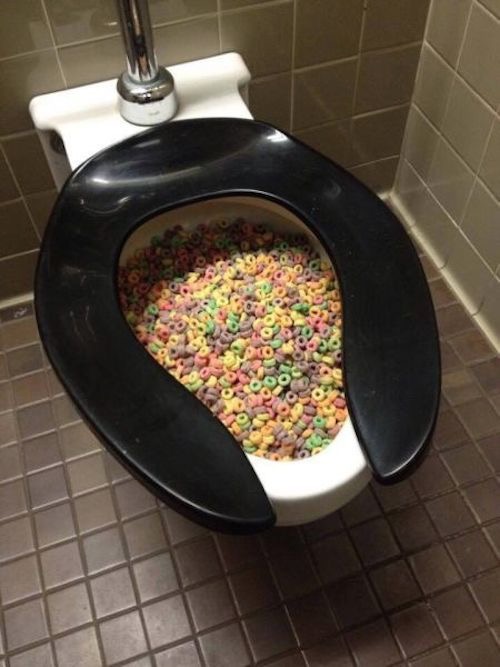Can One to Dispose of Food in the Toilet?
Can One to Dispose of Food in the Toilet?
Blog Article
The publisher is making a few good pointers related to What Can Happen If You Flush Food Down the Toilet? as a whole in this content on the next paragraphs.

Intro
Lots of people are usually confronted with the dilemma of what to do with food waste, particularly when it concerns leftovers or scraps. One typical question that occurs is whether it's all right to flush food down the toilet. In this post, we'll delve into the reasons individuals may think about purging food, the consequences of doing so, and different approaches for proper disposal.
Reasons why individuals may take into consideration purging food
Lack of awareness
Some people may not know the potential injury triggered by flushing food down the toilet. They may mistakenly believe that it's a harmless technique.
Convenience
Purging food down the toilet might seem like a fast and easy option to throwing away unwanted scraps, particularly when there's no nearby trash bin available.
Laziness
In some cases, people might simply select to flush food out of sheer idleness, without thinking about the effects of their actions.
Effects of flushing food down the commode
Ecological impact
Food waste that winds up in waterways can contribute to pollution and damage aquatic ecosystems. Furthermore, the water used to flush food can strain water resources.
Plumbing concerns
Purging food can bring about clogged up pipelines and drains, causing pricey plumbing repair work and troubles.
Types of food that ought to not be flushed
Fibrous foods
Foods with coarse structures such as celery or corn husks can obtain tangled in pipelines and trigger clogs.
Starchy foods
Starchy foods like pasta and rice can absorb water and swell, bring about obstructions in pipes.
Oils and fats
Greasy foods like bacon or cooking oils must never be purged down the commode as they can strengthen and cause obstructions.
Appropriate disposal techniques for food waste
Making use of a waste disposal unit
For homes equipped with waste disposal unit, food scraps can be ground up and flushed through the plumbing system. Nevertheless, not all foods are suitable for disposal in this fashion.
Recycling
Specific food product packaging products can be recycled, minimizing waste and reducing ecological impact.
Composting
Composting is a green means to get rid of food waste. Organic materials can be composted and utilized to improve dirt for horticulture.
The significance of proper waste monitoring
Decreasing environmental harm
Appropriate waste monitoring practices, such as composting and recycling, assistance reduce pollution and preserve natural deposits for future generations.
Shielding pipes systems
By preventing the method of flushing food down the commode, home owners can stop costly pipes repair work and keep the stability of their plumbing systems.
Final thought
In conclusion, while it may be tempting to flush food down the bathroom for ease, it is necessary to comprehend the possible effects of this activity. By adopting proper waste administration methods and disposing of food waste sensibly, individuals can contribute to much healthier pipes systems and a cleaner setting for all.
FLUSH FOOD DOWN THE TOILET?
FLUSHING FOOD CAN CAUSE BLOCKED DRAINS IN YOUR HOME
All of the plumbing fixtures in your home are connected to the same sewer pipe outside of your home. This outdoor sewer pipe is responsible for transporting all the wastewater from your home to the Council sewer mains. Even small pieces of food that go down the kitchen sink can cause problems for your sewer. It should therefore be obvious that flushing larger bits of food, such as meat, risks a clog in either the toilet itself or the sewer pipes. Flushing greasy food is even more problematic because oil coagulates when it cools, coating the interior lining of your pipes.
THE TOILET IS NOT A BIN
Food isn’t the only thing that people shouldn’t be flushing down the toilet. People use the toilet to dispose of all kinds of things such as tampons, makeup wipes, dental floss, kitty litter and even underwear. Water goes to great lengths to educate residents about the high costs and stress placed on wastewater treatment systems simply from people flushing the wrong stuff down the toilet. It costs taxpayers millions of dollars each year, and homeowners thousands in blocked drain repairs.
FLUSHING FOOD IS A WASTE OF WATER
Flushing food is a waste of our most precious resource - water. In June this year Level 1 water restrictions were introduced to protect water supply from drought conditions. Much of New South Wales continues to be affected by prolonged drought with recent figures revealing up to 97 per cent of the state remains in drought. Depending on whether you have a single or dual flush toilet, every single flush uses between five and 11 litres of water. In the current climate this is a huge amount of water to be wasting on flushing food that should be placed in the bin (or better yet, the compost).
https://www.jabplumbingsolutions.com.au/blog/can-you-flush-food-down-the-toilet

I was shown that report on from a friend on a different web page. Be sure to take a moment to promote this blog entry if you enjoyed reading it. We love reading our article about Flushing Food Down the Toilet?.
Call Today Report this page